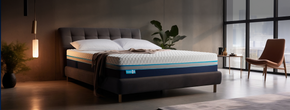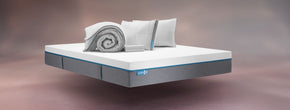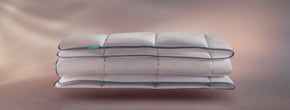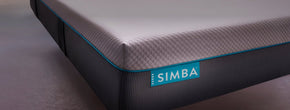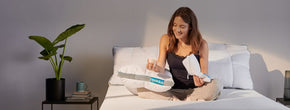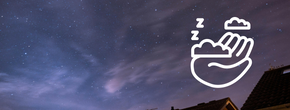The history of sleep

We’re experiencing a sleep revolution. We can google any sleep problem we have, ask specialists for detailed advice, and create beds that pack years of research into a single mattress (like we did, in fact). Our relentless advancements have presented us with an incredible opportunity: a world where everyone everywhere can enjoy the benefits of a good night’s kip.
Even if it doesn’t feel that way when it’s 9 in the morning, you’re on your fourth coffee break, and you’re competing with your colleagues about how tired you are.
While we haven’t exactly reached peak sleep thanks to the stresses of the modern world, remember this: at least you didn’t have to get up and fend off a saber tooth tiger last night (probably, anyway). So how did our ancestors sleep when we have enough trouble in the present?
The Ice Age
You know that feeling you realise you’ve been “de-friended” on Facebook? That rush of adrenaline? It originates from the aforementioned sabre tooth tiger encounters. Our Ice Age ancestors required the ‘fight or flight’ response for survival both day and night, which is why we hold on to that (once useful) adrenalin today.
- Evidence shows that our ancestors preferred to sleep in ‘round’ beds, a little like nests, made from materials like straw. This suggests that they slept in the foetal position (which may have made them feel more secure, given the dangers of the world around them).
- Sleep was likely to have occurred in short bursts, helping them stay alert for danger.
- Our ancient ancestors probably went to sleep very soon after dusk; without artificial light, their melatonin levels would have responded to sunrise and sunset accordingly, causing them to follow the rhythms of the day.
With long hours of darkness and nothing to do, you’d have thought Neolithic people would be sleep fiends, but not so. They are likely to have slept quite lightly, always on the alert for unusual noises that might mean danger.
The Ancient Egyptians
Let’s go across the globe to the Ancient Egyptians. Of their time, the ancient Egyptians were indisputably the most advanced in their approach to sleep.
- Curing insomnia was important to them as they believed that dreaming was a state between life and death, and dreams themselves could serve as oracles and messages from the gods.
- Sleep temples and shrines were scattered all across Ancient Egypt and it was common practice to keep a dream diary, for later interpretation.
- Although progressive in their attitude towards sleep, their environments still left much to be desired. Beds were known to dip in the middle and rise at the foot - our idea of a memory foam mattress from hell.
Sleep was so important to the Ancient Egyptians that they even established remedies for insomnia. The poppy seed (opium), for example, was used as a hypnotic and anaesthetic.
The Middle Ages
Simba Hybrid® Mattresses could have found their place in the early Middle Ages, where amongst the lower classes, entire families slept in the same bed to conserve warmth. Here’s what those beds looked like:
- Beds themselves were most commonly mattresses stuffed with hair, wool or feathers, covered with animal skins and placed on a bench or a carpet.
- Many people of the Middle Ages slept not in one shift, but in two phases: first sleep and second sleep.
- First sleep began at sunset and ended at around 2:00, when they would rise to pray, go about usual duties or procreate.
- After a few hours, they fell into a second sleep. This biphasic sleep pattern is thought to have been the first sleep pattern adopted by early man and still exists in the animal kingdom. It is still in dispute as to whether this sleep pattern is still relevant or beneficial in this day and age.
The Middle Ages had its own problems; hygiene was low and illness rife. This, paired with having to share grandma’s bed, meant lie-ins were probably not a priority.
The Renaissance
The Renaissance was something of a revolution for sleep in the West. Tough, hard mattresses made of straw were gone and covered in materials like silk… for those that could afford them, anyway.
- Biphasic sleep was likely still popular, but now this time might be used for activities like reading and talking (for the rich) and chores (for the poor).
- Superstition over sleep was slowly being replaced by scientific enquiry, and the importance of sleeping well was starting to be understood - although the reasons why sleep was good for you were less than clear.
- Sleep became an important and popular subject in Renaissance art, where painters took to depicting dreams, visions, and insomnia in all their glory.
It was a good time for sleep if you could afford a bed and servants - less so if you were the one running around on your employer in the middle of the night because they fancied having the candles lit.
20th century to now
Not only is the enjoyment of sleep a recent convention, so is our practice of taking our rest all at once, with biphasic sleep practice moving completely out of fashion by the 1920s.
- Sleep culture became revolutionised by electricity and coffee. Lit streets, homes and late-night bars set the evenings buzzing with activity, giving people the excuse to stay awake late into the evening.
- From the 20s, for the working classes, the evenings became a time of enjoyment, fuelled by affordable entertainment.
- Since then bedrooms have slowly become places not just of sleep, but of relaxation and enjoyment for everyone, with many people now keeping technology such as television sets in the bedroom.
Today, we’re better educated and more aware of the important role of sleep in our lives. And although sleep disorders are on the rise, so too are access to the tools to combat it.
How did the way our ancestors sleep affect us now?
Good question. We’re still not entirely sure how our ancestors slept (we have to unpick it all from the evidence we can find), but scientists are confident that many of our sleep problems, such as not being able to drop off, are the result of our modern lifestyles not matching our evolutionary needs. These problems include:
- Excess stress caused by the ‘fight or flight’ response, which once would have helped keep us safe, but which is now mostly unnecessary.
- People who often wake in the middle of the night might be suited to biphasic sleeping, which is increasingly considered a natural trait - just not one that fits with the commonly accepted ‘eight hours through’ school of sleep.
- Waking up because of unexpected noises, such as the cat scratching your bed, would have been helpful to our ancestors in the past (they needed to keep an eye out for tigers), but as we tend to sleep in secure homes now, the habit of jumping up at every noise is less useful.
- Lastly, our use of screens in the bedroom can disrupt our sleep because our bodies are programmed to respond to natural light, but our eyes and brains don’t know the difference. (More on that here.)
So tomorrow morning, when you’re having a moan to Brenda in Accounts about how little you’ve slept, think of your forefathers.
"Perfect mattress! I’ve been sleeping so great since we got it."- Abby L, Hybrid® Mattress
"The mattress and pillows have changed my sleep completely!"-Jonathan L, Hybrid® Pro Mattress

